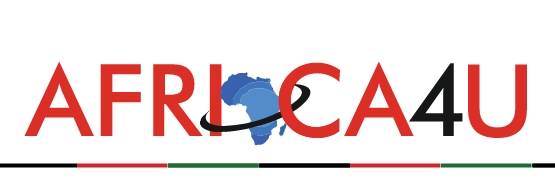(5 Minutes Read)
Dr. Akinwumi Adesina’s transformative decade as President of the AfDB concludes with significant achievements, including the implementation of the High 5s agenda and a capital expansion to USD 318 billion. His successor, Sidi Ould Tah, brings a proven track record in African and international finance, taking charge at a time when the Bank faces shrinking aid, geopolitical challenges, and an urgent need for innovative resource mobilisation. Tah’s presidency will be shaped by his ability to bridge Africa’s massive infrastructure funding gap, promote inclusive growth, and align with AfDB’s 2024–2033 strategy amidst complex institutional dynamics.
After a decade of remarkable leadership, Dr. Akinwumi Adesina is set to bid farewell as President of the African Development Bank (AfDB) at the end of August. Under his stewardship, the ambitious development agenda of AFDB -the High 5s, Light and Power Africa, Feed Africa, Industrialise Africa, Integrate Africa, and improve the quality of life of Africans- transformed countless lives across the continent. AFDB also hit a new milestone in institutional expansion with its capital base soaring to $318 billion.
AFDB, the 60-year-old development finance institution, has a complex structure and mandate. The shareholders include 54 African countries and the G7 nations. The mandate of the Bank includes several large-scale infrastructure development projects across Africa, their resource mobilisation, allocation, implementation, and so on. Funds are sourced from the African Development Fund, with due support from international partners. Consequently, the President of the Bank has a very pivotal role in accomplishing the tasks.
Last week, AFDB’s quest for a competent chief ended with the election of Sidi Ould Tah, a former Mauritanian economy minister and the outgoing president of the Arab Bank for Economic Development. With a versatile career spanning over 35 years in African and international finance, including Arab Bank for Economic Development in Africa (BADEA), Tah fits the bill.
During his ten-year tenure in BADEA, he succeeded in doubling the assets of the Bank, which culminated in credit ratings of AA+/AAA. This exceptional financial acumen won the confidence of the AFDB shareholders. His resounding victory, winning over 76% of votes, reflected the trust in his leadership to lead the AFDB, amidst the deepening funding crisis and global economic uncertainties.
The challenges before the new President are galore. Driving Africa’s transformation amidst shrinking development Aid, escalating instability, and mounting debt burden is a humongous task. Amidst these challenges, he has to focus on accelerating job creation, mobilising climate finance, and attracting investment in key sectors like energy, agriculture, and infrastructure to drive economic growth. Promoting green infrastructure, advancing renewable energy, and combating climate change are also key priorities. At the heart of Tah’s vision is fostering inclusive growth by prioritizing initiatives to eradicate poverty and improve education. Tah must also align his strategy with the African Development Bank’s (AfDB) latest priorities, as outlined in its Ten-Year Strategy (2024-2033). The focus of the strategy includes investing in women and youth, addressing climate change, supporting fragile states, and promoting good governance.
The primary challenge of the new President of the AFDB lies in mobilizing both domestic and international resources to meet Africa’s development needs amid shifting geopolitical dynamics and the decline of traditional development aid. The recent announcement of the Trump administration to cut $555 million in funding to the AFDB and its concessional financing arm, the African Development Fund (ADF), has deepened the crisis. The continent faces an astounding annual financing gap for its infrastructure needs. Estimated between $68 billion and $ 108 billion, it is almost eight to ten times the total approvals of the AfDB from 2022 to 2023.
The fundamental structure of the Bank is also flawed. The twenty-seven non-regional members, including Norway, UAE, Japan, and the United States, with their voting power, hold significant sway over AfDB’s development priorities. In the previous cycle, nearly 40% of the Bank’s resources were controlled by them.
Given the resource crunch, Tah will have to find innovative ways of doing more with less funds or find new donors. To bridge the funding gap and secure sufficient resources for meeting the continent’s development needs, he will have to look at domestic resource mobilisation and diversify Africa’s international funding partners. Probably, Africa may seek funding support from emerging economies like the UAE, Turkey, Saudi Arabia, etc. Central to his strategy is the development of a self-reliant and sustainable ecosystem by tapping the potential of domestic resources. This will ease external pressures and supplement the traditional Aid. The hope is that his experience at BDEA, where he successfully quadrupled its capital, will serve as a strong foundation.
Tah’s legacy will be defined by his ability to navigate the global and local turbulences, tapping innovative financial instruments to meet Africa’s developmental needs, and harnessing Africa’s demographic dividend. The success of his Africa-centred vision depends on its delivery and his ability to forge strategic partnerships while retaining the trust and confidence of the member states. Let us hope that Tah’s presidency will herald a positive transformation for the AFDB, as a leading force in Africa’s development.





